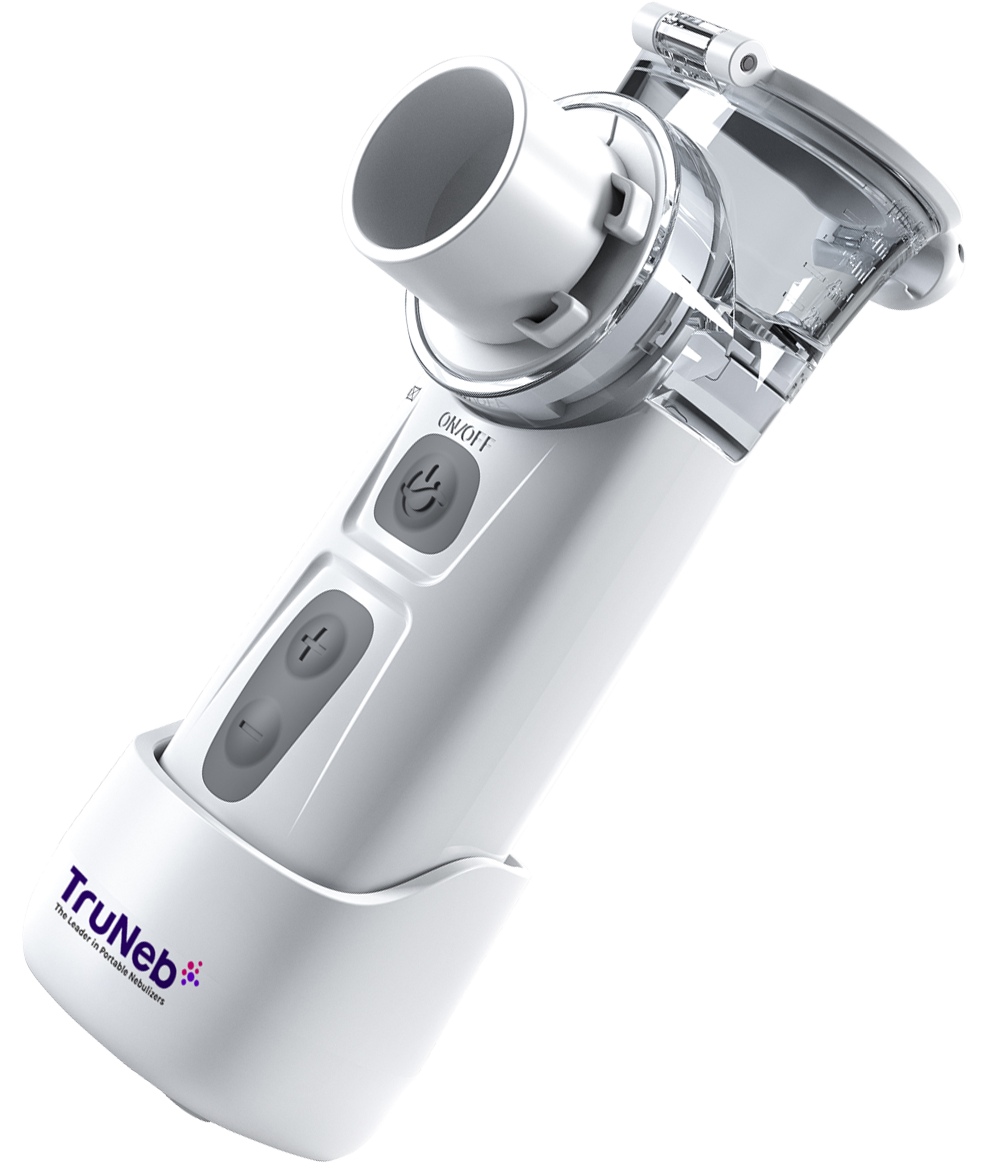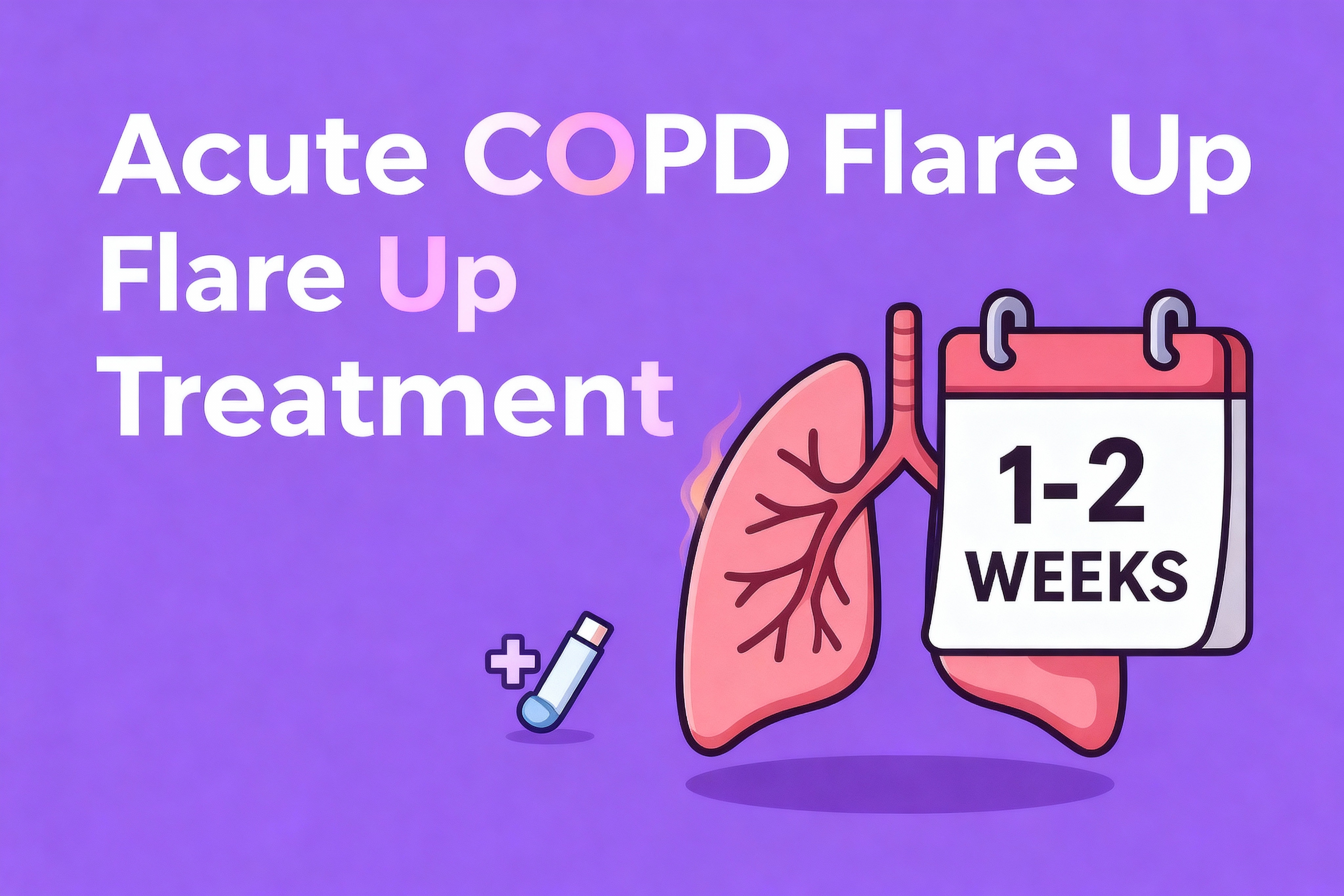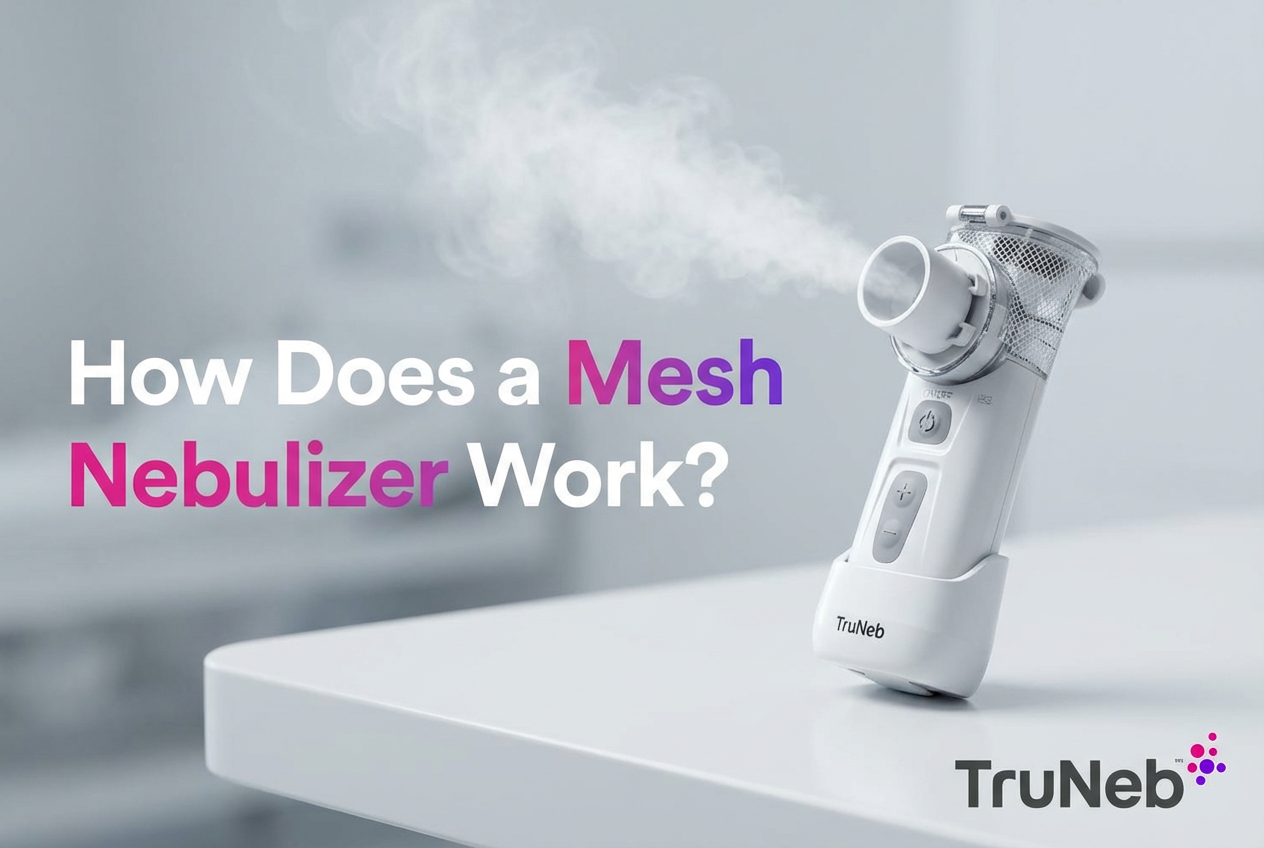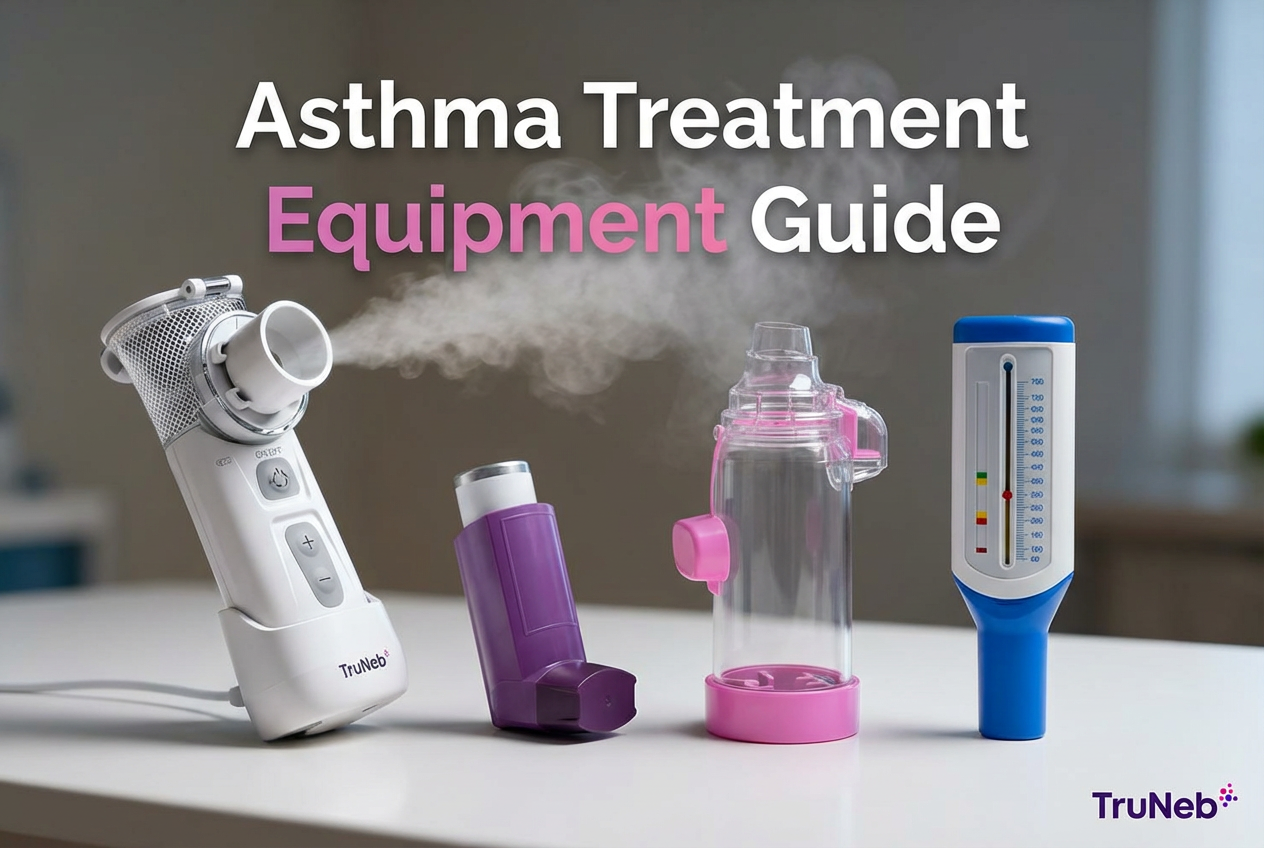On this page

If you or a loved one is on high flow oxygen in the hospital, it helps to understand what this treatment does, why doctors use it, and how it fits into your overall care.
What Is High Flow Oxygen Therapy?
High flow oxygen therapy is a hospital treatment that delivers a strong stream of warm, moist, oxygen-rich air through soft tubes under your nose to treat very low blood oxygen.
In medical terms, this setup is called high-flow nasal cannula (HFNC). It can deliver up to around 60 liters of gas each minute and as much as 100% oxygen, compared with about 1 to 6 liters per minute and much lower oxygen levels from a standard nasal cannula, according to StatPearls.
Doctors use high flow oxygen for people with acute hypoxemic respiratory failure when regular oxygen is not enough to keep your blood oxygen in a safe range (your oxygen saturation), but they still hope to avoid putting in a breathing tube.
In this guide you’ll see how HFNC works, when doctors choose it, what it feels like, and how care usually looks after you leave the ICU, including how home tools like inhalers or nebulizers that your doctor recommends.
How High Flow Oxygen Therapy Actually Works
High flow oxygen starts with a machine that mixes pure oxygen with room air using an oxygen blender, warms it, and adds moisture. That gas then travels through wide tubing into soft nasal prongs that sit just inside your nostrils. Some hospitals also call this setup high-flow nasal oxygen (HFNO).
High flow systems can deliver gas ranging from normal room air (about 21% oxygen) up to nearly pure oxygen (100% oxygen, often written as FiO2 1.0—the oxygen percentage you breathe in), as shown in an overview of high-flow systems on PubMed.
Because the flow is so strong, it can match or even exceed how fast you breathe in. That means each breath can contain a much higher oxygen level instead of being diluted with room air.
The constant stream of gas also helps wash out the used air that sits in your nose and throat between breaths. This process, also called dead space washout, lowers the amount of carbon dioxide left behind and makes each new breath more efficient (LITFL high-flow nasal cannula guide).
High flow oxygen gives a small amount of back pressure in your airways, which helps keep tiny air sacs open. This gentle back pressure is similar to a low level of positive end-expiratory pressure (PEEP), a type of support that helps keep airways from collapsing between breaths. On top of that, the gas is heated to about body temperature and fully humidified, which protects the lining of your airways and helps mucus move more easily (Dräger high flow oxygen therapy overview).
In simple terms, high flow oxygen works by giving you more oxygen, clearing out stale air, and making each breath feel easier so your body doesn't have to work as hard to breathe.
When Doctors Use High Flow Oxygen Therapy
High flow oxygen is used for people who are very short of breath and have low blood oxygen, but are still breathing on their own.
Common examples include:
- Severe pneumonia or ARDS. Lung infection or inflammation can fill the air sacs with fluid so regular oxygen no longer keeps levels safe. Studies in adults with acute hypoxemic respiratory failure show that high-flow nasal cannula can lower the need for intubation compared with conventional oxygen in some groups (BMJ Open Respiratory Research meta-analysis).
- COVID-19 lung disease. During the COVID-19 pandemic, many hospitals used high flow oxygen to support patients with very low oxygen while trying to avoid a breathing tube.
- COPD or asthma flare-ups with low oxygen. If carbon dioxide is not extremely high and the person cannot tolerate a tight mask, high flow oxygen is sometimes used to boost oxygen while keeping things more comfortable. When carbon dioxide is very high, doctors usually choose noninvasive ventilation such as BiPAP instead of high flow oxygen.
- Right after a breathing tube comes out or after major surgery. HFNC can act as a step-down support while the lungs adjust and heal.
- Comfort-focused palliative care. In some people with advanced lung or heart disease, high flow oxygen is used mainly to ease the feeling of air hunger when other options are not enough.
Hospitals use clear criteria to decide who is a good fit for high flow oxygen and who instead needs noninvasive ventilation or a breathing tube. In practice, doctors use high flow oxygen for severe breathing problems such as pneumonia, ARDS, COVID-19 lung disease, COPD or asthma flare-ups with low oxygen, and right after a breathing tube comes out.

High Flow Oxygen vs Other Oxygen Devices
There are several ways to give oxygen, and it can be hard to keep them straight. This chart shows where high flow oxygen fits compared with common options.
This table compares common oxygen therapies so you can see how high flow oxygen sits between simple nasal cannulas and full mechanical ventilation.
| Therapy | Typical flow and oxygen | Pressure support | How it is given | Usual role |
|---|---|---|---|---|
| High-flow nasal cannula | About 20 to 60 L/min, up to 100% oxygen (Nishimura 2015 study) | Gentle back pressure (around 2 to 5 cm H2O) (LITFL high-flow overview) | Wide nasal prongs with heated, humidified gas | Severe low oxygen without a breathing tube |
| Standard nasal cannula | About 1 to 6 L/min, roughly 24% to 40% oxygen (StatPearls oxygen therapy review) | None | Small prongs under the nose | Mild oxygen needs |
| Non-rebreather mask | Up to 15 L/min, about 60% to 90% oxygen | None | Tight face mask with a reservoir bag | Short-term rescue oxygen |
| CPAP or BiPAP (noninvasive ventilation) | Various flows with strong pressure support | Continuous or two-level pressure | Tight mask over nose or face | When both oxygen and breathing effort are big problems |
| Mechanical ventilator | Machine controls breaths and oxygen | Full pressure support through a tube | Tube in the windpipe, usually with sedation | Life support for severe respiratory failure |
Flows and oxygen percentages are typical ranges; exact settings depend on the person and the hospital.
High flow nasal cannula mainly boosts oxygen and gives a light pressure, while CPAP and BiPAP focus on pushing air in with higher pressures to support each breath. If someone needs strong pressure support or has very high carbon dioxide levels, CPAP or BiPAP is usually a better fit than high flow oxygen. High flow oxygen is stronger than regular nasal cannula or masks but less invasive than CPAP, BiPAP, or a breathing tube.
What It Feels Like To Be On High Flow Oxygen
High flow oxygen is given through soft, curved prongs that sit just inside your nostrils, connected to wide tubing and a heated humidifier near the bed.
You'll feel a steady, warm breeze of air in your nose and sometimes at the back of your throat. Because the gas is warmed and fully humidified, most people find it more comfortable than cold, dry oxygen from a standard cannula or mask (Dräger high flow oxygen therapy overview).
The machine makes a soft humming noise, but it shouldn't be very loud. Nurses and respiratory therapists will adjust the prongs and straps so they don't rub on your skin and will check regularly for any redness or soreness.
While you're on high flow oxygen you'll be closely watched. A fingertip sensor tracks your oxygen level, staff check your breathing rate and comfort regularly, and the team can change settings quickly if your condition changes. You can usually still talk, drink small sips, and cough with the nasal prongs in place.
It's common to feel anxious when you first see all the tubing and the machine. It usually feels less scary once the therapy starts and you notice that breathing is a little easier.
Overall, high flow oxygen usually feels like a warm, steady breeze in your nose that makes breathing easier while still letting you talk and drink.
Limits and Risks of High Flow Oxygen Therapy
High flow oxygen is powerful support, but it has limits and is not right for every person or every setting.
Here are key things to know:
- Hospital-only equipment. HFNC machines need a strong oxygen supply, heated humidifiers, alarms, and trained staff, so they are used in hospitals rather than at home (StatPearls issues of concern).
- Not a cure for failing lungs. If someone keeps getting worse even on high flow oxygen, staying on it too long can delay the move to a breathing tube. Doctors watch closely for signs that intubation is needed.
- Infection control. Because HFNC is an open system, it can increase tiny droplets in the air, so during infections like COVID-19 staff follow strict infection control policies, wear protective gear, and sometimes use special rooms.
- Minor side effects. You might notice mild nose or throat irritation or skin redness where the prongs or straps touch, especially with longer courses of treatment.
- Cost and training. The equipment is more expensive than standard oxygen and staff need training to use it safely, which can limit how widely it is available.
Your care team weighs these pros and cons when deciding on high flow oxygen and will switch to another type of support if your breathing worsens or it is not helping enough. High flow oxygen is powerful hospital-only support with limits, so it has to be used under close monitoring and changed quickly if it is not working well enough.
Weaning Off High Flow Oxygen and Leaving the ICU
High flow oxygen is almost always a short term support. As your lungs heal and your oxygen levels improve, the team will gradually turn the settings down.
They usually lower the flow rate first, then slowly reduce the oxygen percentage while making sure your blood oxygen and breathing rate stay in a safe range. Some hospitals also use tools such as the ROX index, which combines your oxygen level and breathing rate, to help judge whether high flow oxygen is likely to succeed (ROX index study).
Once you can keep good oxygen levels with much lower support, you are usually switched to a regular nasal cannula or simple face mask. That change usually happens as you move from the ICU to a step-down unit or standard hospital ward.
This process usually takes days rather than weeks, although the exact timeline depends on your illness, age, and other health conditions. In short, high flow oxygen is gradually reduced and then replaced by simpler oxygen or room air once your lungs can safely manage with less support.
Breathing Better at Home After High Flow Oxygen Therapy
By the time you leave the hospital, you will no longer be on high flow nasal cannula. That therapy stays in monitored units because it needs special machines and constant checking.
Some people go home with low-flow oxygen from a concentrator or small tanks if their blood oxygen is still low at rest or with activity. Your doctor will decide this based on tests and follow-up plans (NHLBI COPD guidance).
People often continue inhaled treatments to keep their lungs as clear and open as possible. A nebulizer is a small device that turns liquid medicine or saline into a fine mist you breathe in through a mask or mouthpiece. This can help deliver bronchodilators or salt solutions deep into the airways. You might see devices labeled as steam inhalers at the store, but these are not the same as nebulizers and should not be used to deliver prescription breathing medicines.
Portable mesh nebulizers like the TruNeb portable mesh nebulizer use a vibrating mesh to create a fine mist in a small, quiet, battery-powered device you can use at home or on the go. A portable nebulizer like TruNeb can fit into a daily routine for conditions such as COPD, bronchiectasis, or lingering mucus after a bad infection when your doctor prescribes nebulized treatments as part of your plan.
TruNeb also offers medical-grade 3% and 7% hypertonic saline solutions that some lung specialists include in treatment plans to help thin sticky mucus so it is easier to cough up, especially in chronic bronchitis or bronchiectasis. You can read more about how hypertonic saline works in airway disease here.
At home, long-term breathing support usually shifts to low-flow oxygen and inhaled treatments through a nebulizer, always as part of a plan your doctor creates for you. These home tools are meant to work as part of a plan your care team creates for you, not as a replacement for professional advice.
⚠️ Safety Note
Key Takeaways About High Flow Oxygen Therapy
- High flow nasal cannula is hospital-only support. It delivers warm, humid gas at very high flow through soft nasal prongs to treat severe low oxygen when regular oxygen is not enough (StatPearls continuing education activity).
- It bridges the gap to a ventilator. HFNC usually sits between standard oxygen and more invasive options like BiPAP or a breathing tube, and in some patients it can lower the chance of needing intubation (BMJ Open Respiratory Research meta-analysis).
- It feels like a warm, steady breeze. Most people find high flow oxygen more comfortable than tight masks or cold, dry oxygen, and you can usually still talk, drink, and cough.
- It is closely monitored. Because it is powerful support with clear limits, HFNC is always used where staff can watch you and change treatment quickly if needed.
- Home care looks different. After high flow oxygen, long-term breathing support happens with simpler tools like low-flow oxygen, inhalers, and nebulizer treatments from portable devices such as the TruNeb portable mesh nebulizer, always under your doctor’s guidance.
Remember: you are not expected to manage this alone. Your hospital and lung team are there to explain each step and help you plan for life after the ICU.
Frequently Asked Questions
Tap or click a question below to see the answer:
No. High flow nasal cannula systems are designed for hospitals where there is a strong oxygen supply, heated humidifiers, alarms, and staff who can monitor you around the clock, so they are not used in regular home settings or sold as home oxygen machines.
A standard nasal cannula usually runs between about 1 and 6 liters per minute. High flow systems typically deliver 20 to 60 liters per minute of warmed, humidified gas and can provide much higher oxygen levels [https://www.ncbi.nlm.nih.gov/sites/books/NBK526071/#:~:text=Supplemental%20oxygen%20therapy%20is%20one,to%204%20to%206%20liters].
No. High flow oxygen helps your own breathing by giving more oxygen and a gentle back pressure through the nose, but you still take every breath yourself. A mechanical ventilator uses a breathing tube and a machine to move air in and out of your lungs for you.
They watch your oxygen saturation, breathing rate, heart rate, and how hard you seem to be working to breathe. Some teams also use tools such as the ROX index, which combines oxygen and breathing numbers to help judge the chance that high flow oxygen will succeed [https://pubmed.ncbi.nlm.nih.gov/36997243/#:text=PubMed%20pubmed,study%20aimed%20to%20investigate%20the].
Your doctors and respiratory therapists make that call together, based on your lab results, vital signs, and how you feel. They will reduce the settings step by step and switch you to simpler oxygen once your lungs can safely manage with less support.
Disclaimer: This article is for informational purposes only and is not a substitute for professional medical advice, diagnosis, or treatment. Always talk with your doctor about your symptoms, tests, and treatment options.







